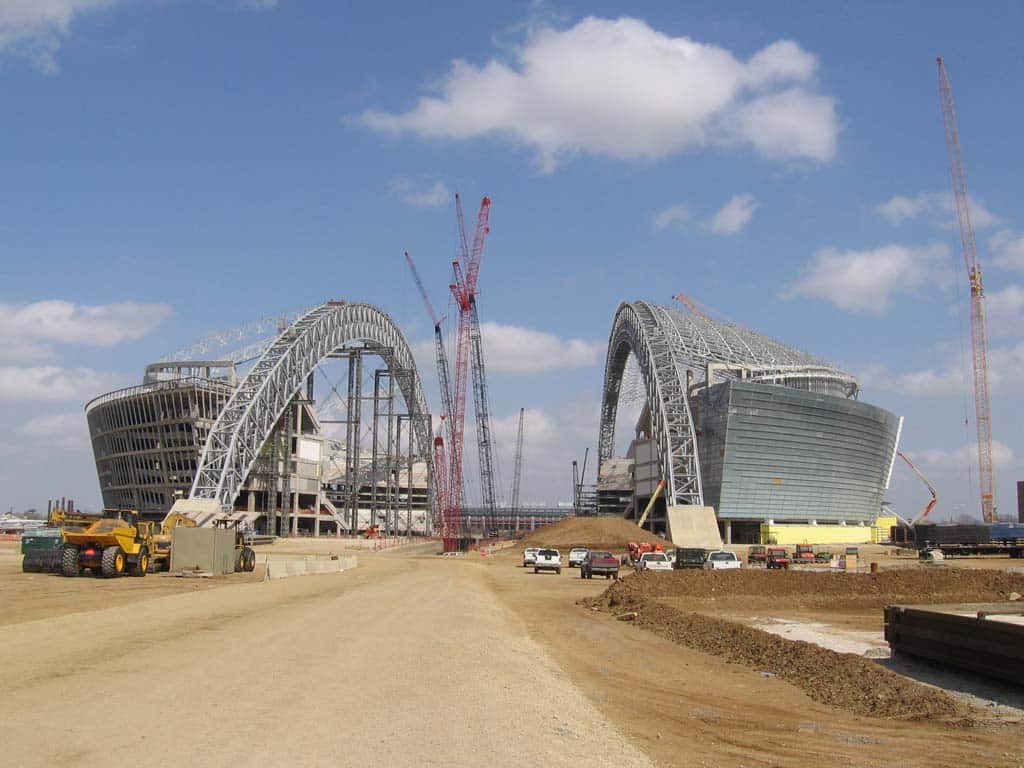Home to the planet’s most famous football team this iconic, modern-day coliseum is both an architectural and a geotechnical marvel.
Dr Gregory and the review team first used classical methods to meet the tight 0.5-inch maximum deflection arch foundation design criteria. When their design challenge was later re-examined with PLAXIS, accurate results were achieved – in a fraction of the time.
They say, “Everything is bigger in Texas,” and the Dallas Cowboys Stadium is no exception. Now called the AT&T Stadium, it’s the world’s largest covered venue with a capacity for up to 100,000 fans.
To give crowds clear, 360-degree viewing the retractable roof is held up by giant, twin arches extending beyond the length of the stadium. Both soar 300 feet above the playing field with a total clear span of nearly 1,300 feet.
“One of the more challenging engineering aspects was creating the foundations to anchor the arches,” says Dr Garry H. Gregory, from Gregory Geotechnical (GREGEO) based in Stillwater, Oklahoma, USA.
With over 50 years of experience in civil / geotechnical engineering and construction management, Dr Gregory’s expertise has helped solve design and construction challenges across a multitude of complex infrastructure projects.
One steel stadium arch weighs over 3000 tons and distributes around 19 million pounds of thrust into each of the four massive, subsurface-boxed foundations.
Design criteria was tight with a maximum deflection of less than 0.5 inches, with soil variations at each arch foundation entry point, adding to the complexity.
Dr Gregory, along with Mr Clyde Baker and the project design team of specialist geotechnical and structural consultants, were called on to help pin a robust solution within these tight parameters.
Using PLAXIS, Gregory later “revisited” their original foundation design, to compare how their classical soil mechanics methods stacked up.
The innovative 2D and 3D modelling software enables you to design and perform advanced finite element soil and rock deformation analysis.
“It was extremely validating to discover an almost identical match in PLAXIS with our original design,” he says.
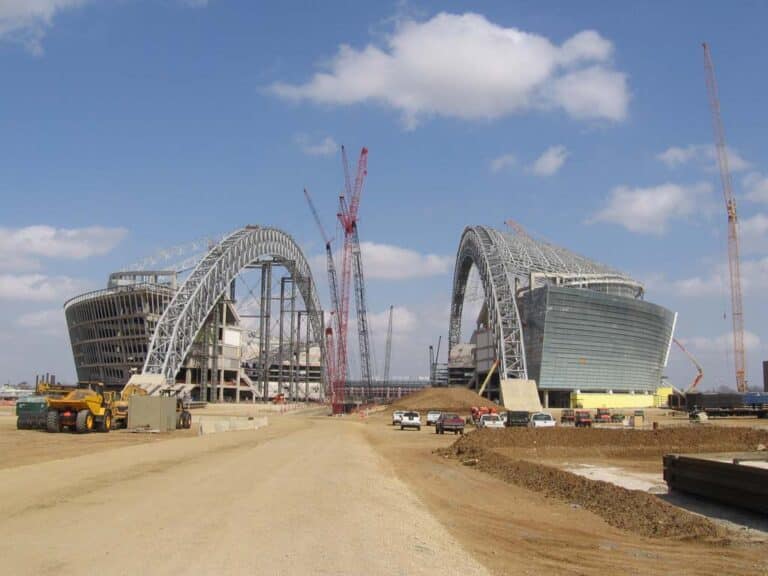
The foundations for the giant twin steel arches were precision engineered for the stadium’s retractable roof
(Image credit: GREGEO)
Solving an engineering mega challenge to create a megastructure
The Dallas Cowboys kicked off their first season in the new Arlington, Texas stadium in 2009. Construction had begun in May 2006 and took over three years to complete at a cost of US $1.4 billion.
The single-span dome roof has a retractable section that – when the weather plays ball – opens in 12 minutes.
However, this compelling architectural feature was what also made the arch foundation design such a headache.
“The tiny deflection tolerance combined with the large lateral roof thrust left us little wiggle room,” says Gregory.
Potential solutions initially considered included large drilled or battered shaft groups, micropile groups or large block foundations.
But these were determined unacceptable due to large, calculated deflections or extreme construction difficulties, such as extensive dewatering.
“Our geotechnical team used classical soil mechanics methods, sacrificial panels load testing and the observational method to best meet deflection criteria,” he says.
After eliminating numerous options, they settled on slurry-placed diaphragm wall foundations.
“Each of the two arches connects to a box foundation at each end that sits about 70 feet underground,” explains Gregory. “And have performed well with less than 0.25 inches of deflection during the monitoring period since completion in late 2008.”
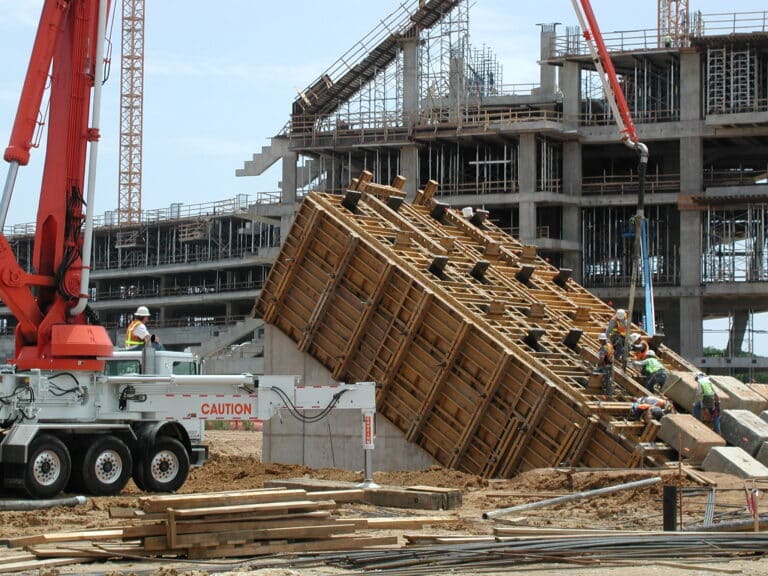
The arches are anchored by massive reaction blocks built on top of subsurface-boxed foundations
(Image credit: GREGEO)
Digitise geotechnical challenges. Run multiple scenarios at speed.
In early 2008, Dr. Gregory transitioned from his traditional geotechnical engineering business to serve on Technical Review Boards, perform peer reviews, and provide general consulting on complex or specialised projects.
His engineering tenacity inspired the 2013 comparative study of the original arch foundation design, this time using finite element method (FEM) analysis in PLAXIS.
An integral part of Seequent’s geotechnical portfolio, this innovative 2D and 3D software can calculate multiple sets of data with ease.
“We thought our study could be useful for geotechnical engineers when considering analysis methods for future complex foundation systems,” says Gregory.
Gregory strongly advocates using several types of software to help verify critical soil deformation, slope stability or water flow challenges across projects.
“What impressed us with PLAXIS is how swiftly we could run all of our original arch foundation design parameters through the software to contemplate multiple scenarios,” he says.
Francisco Diego, Director of Product Management, Geotechnical Analysis, at Seequent explains, “Our software enables you to resolve a geotechnical problem at speed compared to traditional methods such as solving formulations by hand or working from an Excel spreadsheet.”
“What might have taken you three days, a week or a month – can be computed in a matter of hours,” says Diego. “And allows you to easily consider different conditions or multiple scenarios.”
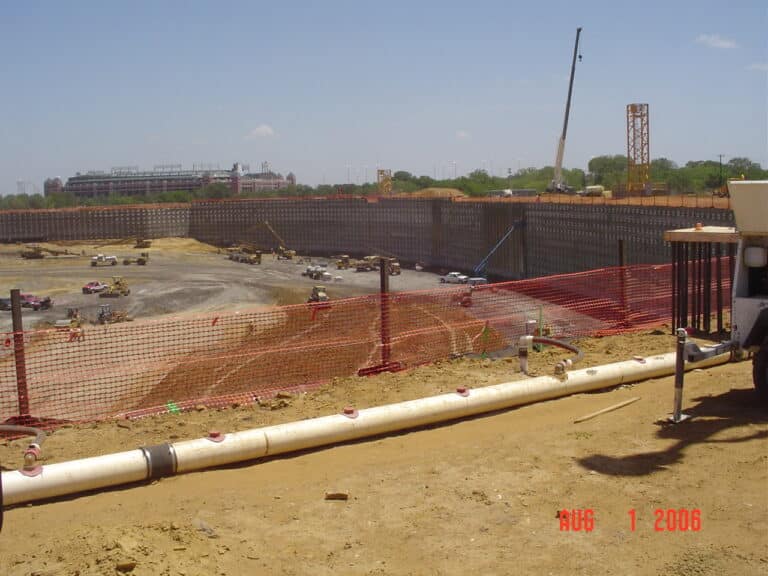
Construction of soil-nail walls to support the 50-foot-deep excavation
(Image credit: GREGEO)
Conquer design challenges across complex infrastructure projects
Another engineering challenge for the arch foundation design was opening the retractable roof.
All three load-resisting mechanisms (side shear, base shear, and passive end resistance) must mobilise at the same time.
“With our original classical soil mechanics method, we couldn’t model that directly,” says Gregory.
“Rather, we had to calculate each different resisting mechanism and apply factors of safety based on engineering judgment and experience to achieve simultaneous mobilisation of each.”
And all critical to achieving the design requirements for the small 0.5-inch deflection criterion.
“PLAXIS would have been wonderful to have in our toolbox at the time we did our original analysis,” explains Gregory.
“It would have taken each different mechanism easily and seamlessly into account to help us better understand the developing resistance.”
“And in fact, we could have been less conservative with it – that’s what re-visiting our design with PLAXIS showed,” he says.
Diego understands that geotechnical engineers want the freedom to focus on the problem at hand, rather than second guess the accuracy of the software.
“With PLAXIS, engineers have peace of mind knowing it delivers fast, precise results so they can concentrate on better solving the different complexities across their projects.”
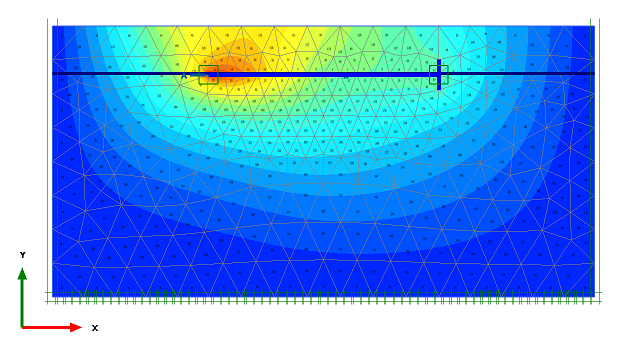
PLAXIS software enables you to design and perform advanced finite element soil and rock deformation analysis
(Image credit: GREGEO)
Connecting the built world above with the hidden world below
“Wow!” was Diego’s response when Gregory explained the Dallas Cowboys stadium is iceberg-like with a big chunk of the structure built into the subsurface.
“If this imposing structure was built all above ground, it would have been too tall for what codes allow in this highly built-up urban environment,” explains Gregory.
Geotechnical engineers know that understanding conditions below ground is key to reducing risk above it.
“Unless you’re building the International Space Station, every structure on this earth relies on a clear understanding of ground behaviour to support the imposed loads,” says Diego.
“You need to ensure soil deformation or displacements will be acceptable during the lifespan of the structure – which might be 50 or 100 years, depending on the design,” he says.
“It’s extremely important to have this understanding – we’re not just talking for stability, but also for resiliency and safety, for example, in an earthquake.”
Using PLAXIS, as part of a connected geotechnical workflow, engineers can make informed decisions, minimise errors, and optimise the efficiency of the design and construction process.
This is especially crucial for large-scale projects that are exposed to complex subsurface conditions.
Dr. Gregory concludes, “We hope achieving an accurate match of results from our PLAXIS follow-up analysis compared with our original design can support an extensive range of geotechnical and structural engineer challenges and positively impact future complex infrastructure projects.”
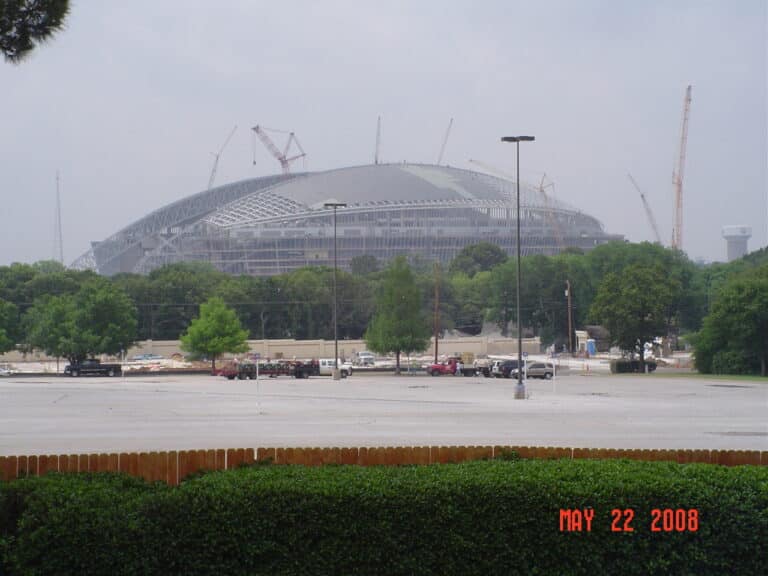
The Dallas Cowboys (now AT&T) stadium in Arlington, Texas nears its 2009 completion
(Image Credit: GREGEO)
Read Dr Garry Gregory’s paper here





